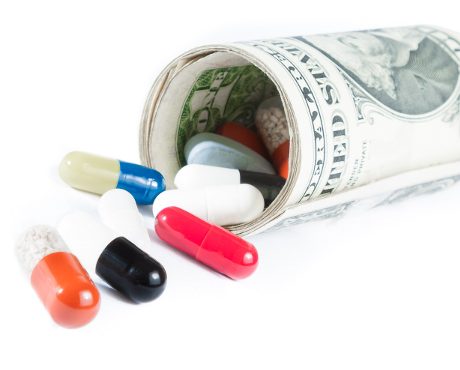Pfizer Inc. (NYSE:PFE) stock is down about 16% over the past six months, while the Dow has seen an eight-percent gain over the same period.
Uncertainty over some of the drug giant’s key franchises, as well as President Trump’s future healthcare and drug-pricing policies, has investors largely looking elsewhere for their dividend checks.
But what’s the main benefit of such sluggish stock performance? Simple: the low expectations built into it. Because when Pfizer’s Q4 results yesterday fell short of analyst estimates, the stock actually finished up more than one percent.
Ah, the joys of dividend value investing.
But what about the long-term upside for PFE stock, you ask? Well, let’s take a closer look at the earnings report and try to figure it out.
Drugged Down Quarter
Pfizer posted Q4 earnings per share (EPS) of $0.47, missing the average analyst estimate by $0.03, while revenue declined three percent to $13.6 billion. To put it plainly, results were less than inspiring.
Largely driving the decline was a sharp 24% sales drop of “Prevnar 13,” Pfizer’s blockbuster family of vaccines. Additionally, sales of autoimmune disease drug “Enbrel” plunged 22% year-over-year. It goes without saying, but the sales declines are reinforcing concerns among analysts about intensifying competition going forward.
Moreover, the company continues to face some pretty hefty patent-cliff challenges. For example, “Peri-LOE” revenue—which includes sales of drugs like “Pristiq,” “Celebrex,” and “Viagra,” which have gone off-patent or will soon—fell 21% over the year-ago period.
Of course, not all of Pfizer’s products experienced year-over-year declines. Sales of the company’s second-leading drug, nerve and muscle-pain treatment “Lyrica,” increased a respectable 1.8% to $1.2 billion. Meanwhile, cancer drug “Ibrance,” a key piece to Pfizer’s long-term growth trajectory, saw sales soar an impressive 104% to $643 million.
“I was pleased with the company’s overall performance during 2016 and believe both of our businesses executed well despite a challenging operating environment,” said Chairman and Chief Executive Officer Ian Read. “We generated attractive operational revenue and earnings growth driven by our major products within both the Innovative Health and Essential Health businesses.” (Source: “Pfizer Reports Fourth-Quarter And Full-Year 2016 Results,” Pfizer Inc., January 2, 2017.)
Healthy Dividends
Given Pfizer’s patent cliff headaches and Prevnar 13 problems, it’s easy to forget one thing: the company’s ability to generate massive cash flow, even amid sluggish sales.
Over the past 12 months, Pfizer’s diversified nature helped it generate operating cash flow of $14.7 billion. Naturally, that bodes well for investors looking for a growing income stream, as the company only paid about half of that amount in dividends. Furthermore, Pfizer’s annual dividend growth rate over the past five years sits at nine percent, reinforcing management’s commitment to rewarding shareholders.
Overall, Pfizer returned a whopping $12.3 billion to shareholders through dividends and share repurchases.
The Bottom Line on PFE Stock
Income investors should seriously consider getting bullish on PFE stock.
Pfizer’s financial foundation remains rock-solid, its key products remain category leaders, and new drugs, along with a relatively strong pipeline, provide decent long-term growth prospects. And for investors with a somewhat shorter time horizon, things might be getting better sooner rather than later.
For 2017, management now sees adjusted EPS of $2.50–$2.60, representing year-over-year growth of about six percent at the midpoint of that range.
With PFE stock sporting a juicy dividend yield of four percent, now seems like an opportune time to jump in.





